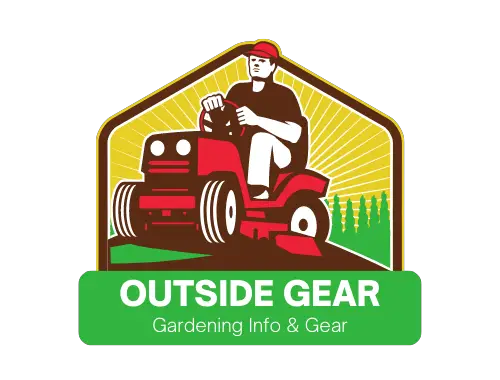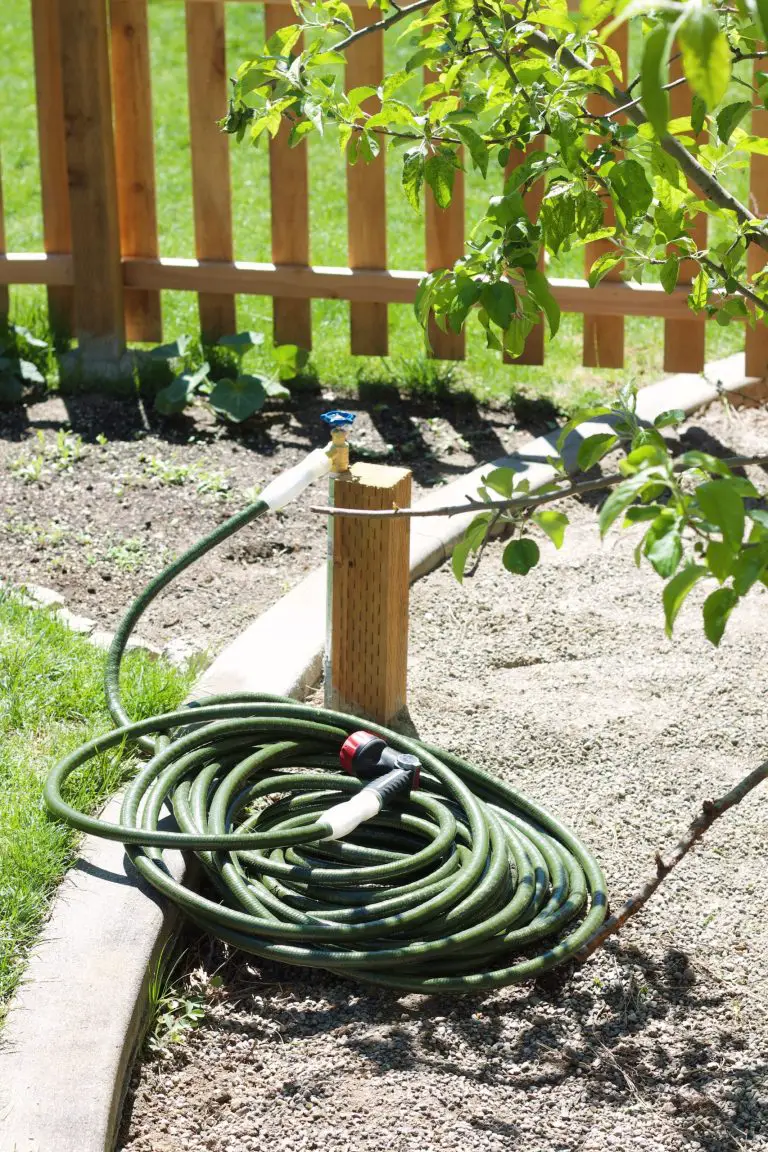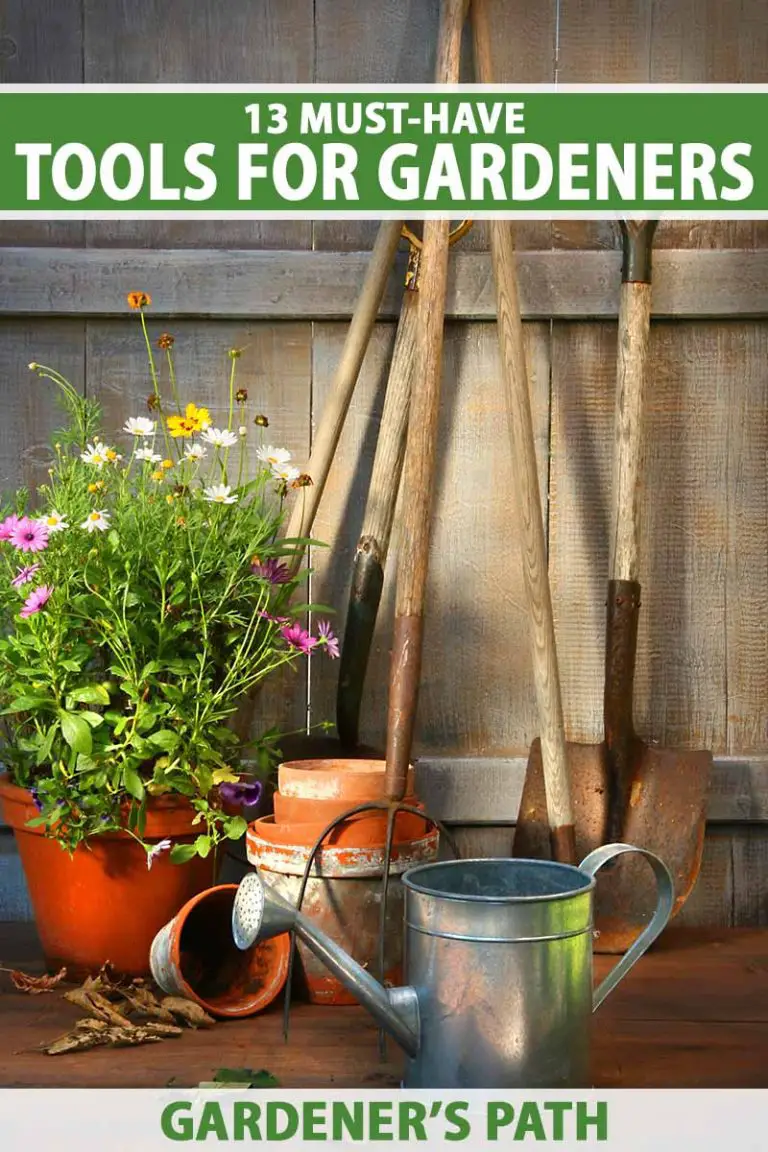A rooftop garden is a garden that is created on the roof of a building, providing a green space in urban environments. To make one, start by selecting appropriate plants, ensuring proper drainage, and providing sufficient sunlight and water for their growth.

Credit: wwd.com
Benefits Of A Rooftop Garden
Rooftop gardens, also known as green roofs, have become increasingly popular in recent years. These innovative gardens provide a host of benefits both for the environment and the building they are situated on. In this section, we will explore the various advantages of rooftop gardens and how they can transform your space.
Impact On Environment
- Rooftop gardens act as natural insulators, reducing the overall temperature of the building and the surrounding area. This helps combat the urban heat island effect, where cities tend to be warmer than rural areas.
- These gardens absorb and filter pollutants from the air, improving air quality and reducing the impact of air pollution on human health.
- By creating additional green spaces in urban areas, rooftop gardens help preserve biodiversity and provide habitats for birds, insects, and other wildlife.
- The plants in rooftop gardens capture rainwater, reducing stormwater runoff and the strain on drainage systems. This helps prevent flooding and water pollution.
Enhanced Aesthetic Appeal
- One of the primary benefits of rooftop gardens is the visual impact they create. These green oases add a touch of natural beauty to otherwise dull and gray rooftops, transforming them into vibrant and inviting spaces.
- By incorporating various plants, flowers, and even trees, rooftop gardens create a serene and peaceful atmosphere, providing a retreat from the hustle and bustle of city life.
- Rooftop gardens can be designed to match the architectural style of the building, seamlessly integrating nature with the surrounding urban environment.
- These gardens can also be customized to suit individual preferences, whether one prefers a colorful floral display or a more minimalist, zen-like arrangement.
Reduced Energy Consumption
- The installation of rooftop gardens can help reduce energy consumption by providing natural insulation and reducing the need for air conditioning. The plants and soil act as a barrier, preventing heat from entering the building during hot summer months.
- In winter, rooftop gardens provide an additional layer of insulation, reducing heat loss and decreasing the reliance on heating systems.
- By mitigating the urban heat island effect, rooftop gardens indirectly contribute to energy savings in the wider community, as temperatures are lowered, and the demand for air conditioning reduces.
- The increased vegetation also helps to absorb sound, reducing noise pollution and providing a quieter, more peaceful indoor environment.
Rooftop gardens have a multitude of benefits, from their positive impact on the environment to the enhanced aesthetic appeal they bring to buildings. Moreover, they contribute to energy conservation and provide a calming and relaxing space amidst the concrete jungle.
By incorporating a rooftop garden, you not only add a touch of greenery to your surroundings but also contribute to a more sustainable and enjoyable urban landscape.
Getting Started With Your Rooftop Garden
Transforming your rooftop into a vibrant garden can not only beautify your space but also bring numerous environmental and health benefits. However, before you roll up your sleeves and start planting, there are a few essential steps you need to consider.
From assessing your rooftop’s suitability to obtaining necessary permissions and licenses, this section will guide you through the initial phase of creating your dream rooftop garden.
Assessing Your Rooftop’S Suitability
Before embarking on your rooftop garden journey, it’s crucial to determine whether your rooftop is suitable for gardening. Consider the following key points to assess its feasibility:
- Structural stability: Ensure that your rooftop is strong enough to bear the weight of the garden elements, including soil, plants, containers, and additional structures.
- Sunlight exposure: Evaluate how much sunlight your rooftop receives throughout the day. Most plants require a minimum of six hours of direct sunlight, so choose plants accordingly.
- Wind exposure: Take note of any prevailing winds that may affect your rooftop garden. Strong winds can damage plants and compromise their growth, so consider installing windbreakers or choosing wind-resistant plants.
- Drainage: Confirm that your rooftop has proper drainage mechanisms in place to avoid water accumulation and potential damage to the structure.
Planning And Designing Your Garden
The success of your rooftop garden largely depends on careful planning and thoughtful design. Here are some key points to keep in mind during the planning phase:
- Garden goals: Determine the purpose of your rooftop garden. Are you aiming for a decorative space, an edible garden, or a combination of both? This will guide your plant selection and overall design choices.
- Space evaluation: Measure your rooftop area and map out the available space for the garden. Consider any limitations or obstructions such as hvac units, chimneys, or access points.
- Container gardening: Rooftop gardens often rely on container gardening due to limited space. Research different types of containers suitable for your plants and aesthetic preferences.
- Irrigation system: Decide on an appropriate irrigation system for your garden. Consider using self-watering containers or installing a drip irrigation system to ensure proper watering and minimize water waste.
- Plant selection: Choose plants that are well-suited to rooftop conditions, such as drought-tolerant species or varieties that thrive in containers. Incorporate a mix of perennials, annuals, herbs, and vegetables to create an attractive and functional garden.
Obtaining Necessary Permissions And Licenses
Before you start digging and planting, it’s essential to check if you need any permissions or licenses for your rooftop garden. Here’s what you should consider:
- Local regulations: Research local building codes and regulations regarding rooftop gardens. Some municipalities have specific guidelines for installation, safety, and structural requirements that you need to comply with.
- Homeowners association (hoa) approval: If you live in a condominium or share your building with other residents, check with your hoa or building management to ensure rooftop gardening is allowed and if any restrictions or guidelines exist.
- Permits and licenses: Determine if you need any permits or licenses to legally establish your rooftop garden. This may include permits for structural modifications, water usage, or any necessary inspections.
By taking the time to assess your rooftop’s suitability, plan and design your garden thoughtfully, and navigate the necessary permissions and licenses, you’ll be well-prepared to embark on your rooftop gardening adventure. In the next section, we’ll delve deeper into the crucial aspect of preparing your rooftop for gardening.
Choosing The Right Plants For Your Rooftop Garden
Rooftop gardens are becoming increasingly popular as people look for creative ways to utilize urban spaces. These gardens provide a multitude of benefits, from adding greenery to the cityscape to improving air quality and reducing energy consumption. If you’re considering creating your own rooftop garden, one of the most important factors to consider is choosing the right plants.
In this section, we will explore the considerations for rooftop gardens, provide a comprehensive guide to the best plants for these environments, and share some tips for selecting plants that thrive in rooftop settings.
Considerations For Rooftop Gardens
- Sun exposure: Rooftop gardens are often exposed to more sunlight than traditional gardens. Consider the amount of direct sunlight your rooftop receives and choose plants that can tolerate or thrive in full sun conditions.
- Wind resistance: Rooftops can be windy environments, so it’s important to select plants that can withstand strong gusts. Look for plants with sturdy stems and leaves that aren’t easily damaged by wind.
- Weight restrictions: Before embarking on your rooftop garden project, it’s crucial to ensure that the structure can support the weight of the garden. Consult with a structural engineer to determine the maximum weight limit and choose plants that won’t exceed it.
- Drainage: Proper drainage is essential for rooftop gardens to prevent water accumulation. Select plants that can tolerate well-drained soil and consider incorporating drainage systems or containers with built-in drainage.
Best Plants For Rooftop Gardens: A Comprehensive Guide
When it comes to rooftop gardens, there’s a wide variety of plants that can thrive in these unique environments. Here are some excellent options to consider:
- Sedums: These succulent plants are known for their ability to survive in drought conditions and can add beautiful texture and color to your rooftop garden.
- Ornamental grasses: Grasses like feather reed grass and blue fescue are not only aesthetically pleasing but also resilient in windy conditions.
- Herbs: Deck out your rooftop garden with an array of flavorful herbs such as basil, rosemary, and thyme. These culinary favorites are not only easy to grow but also add a delightful scent to your outdoor space.
- Wildflowers: Create a vibrant and pollinator-friendly rooftop garden by planting native wildflowers like bee balm, coneflowers, and black-eyed susans.
- Dwarf fruit trees: If space allows, consider adding dwarf fruit trees such as apple or cherry varieties to enjoy fresh produce right from your rooftop.
Tips For Choosing Plants That Thrive In Rooftop Environments
- Select drought-tolerant plants: Rooftop gardens are typically exposed to more heat and less water, so choosing plants that can handle dry conditions is essential.
- Opt for lightweight containers: When planting in containers, use lightweight materials to avoid adding unnecessary weight to your rooftop. Look for containers made of plastics or fiberglass.
- Consider vertical gardening: Vertical gardening can make the most of limited space in rooftop gardens. Install trellises or create living walls to grow climbing plants and vines.
- Incorporate native plants: Native plants are well-adapted to the local climate and require less maintenance. They can also attract local wildlife, enhancing the biodiversity of your rooftop garden.
By considering these factors and exploring the wide range of plant options available, you can create a thriving rooftop garden that not only beautifies your space but also contributes to a greener and more sustainable environment.
Creating A Suitable Environment For Your Rooftop Garden
Rooftop gardens offer a unique opportunity to transform unused urban spaces into vibrant green havens. Whether you’re an avid gardener or looking to reap the benefits of growing your own food, creating a rooftop garden can be a rewarding endeavor.
To ensure the success of your rooftop garden, it’s crucial to create a suitable environment that caters to the specific needs of your plants.
Soil Preparation And Waterproofing
- Before beginning your rooftop garden, it’s essential to assess the structural integrity of your roof. Ensure that it can support the weight of the garden, including the soil and plants.
- Waterproofing is a crucial step to prevent water leakage into the building. Use high-quality waterproofing materials and consult with professionals if needed.
- Selecting the right soil is fundamental for the health and vitality of your plants. Opt for lightweight, well-drained soil with good moisture retention to ensure proper root development.
- Consider using a combination of compost, peat moss, and perlite to create a nutrient-rich and well-aerated soil mix.
- Regularly monitor the ph levels of your soil and make necessary adjustments to create an optimal growing environment for different plant species.
Drainage And Irrigation Systems
- Proper drainage is crucial to prevent water buildup and ensure the health of your plants. Install effective drainage systems, such as channels or drains, to divert excess water away from the rooftop.
- Consider using raised beds or containers with drainage holes to facilitate efficient water flow.
- Implement an irrigation system to provide consistent moisture to your plants. Drip irrigation or soaker hoses are excellent options for rooftop gardens.
- Make sure to monitor moisture levels regularly and adjust irrigation accordingly to avoid overwatering or underwatering your plants.
Adequate Sunlight And Shade
- Most plants require a sufficient amount of sunlight to thrive. Assess the amount of sunlight your rooftop receives throughout the day and choose plants accordingly.
- Opt for sun-loving plants, such as herbs, tomatoes, and peppers, for areas that receive direct sunlight for at least six hours a day.
- Create shade areas for plants that prefer partial or full shade, such as ferns or leafy greens. Install shade cloths or use trellises to create a shaded canopy in certain areas.
By focusing on soil preparation, waterproofing, drainage and irrigation systems, and providing adequate sunlight and shade, you can create an optimal environment for your rooftop garden. With these considerations in mind, your rooftop garden will flourish, providing you with a peaceful oasis and a bountiful harvest.
Maximizing Space In Your Rooftop Garden
Rooftop gardens are a fantastic way to make the most of your available space and create a lush oasis in the heart of the city. Maximizing the space in your rooftop garden is essential for creating a thriving and vibrant space.
In this section, we will explore some key techniques to help you get the most out of your rooftop garden.
Vertical Gardening Techniques
- Vertical gardening is a great way to make the most of limited space in a rooftop garden. By growing plants vertically, you can take advantage of the height of your space and create a lush and green environment. Some popular vertical gardening techniques include:
- Using trellises and arbors: These structures provide support for climbing plants, allowing them to grow upwards and save valuable ground space.
- Installing wall-mounted planters: Hanging planters on walls is an excellent way to add greenery without taking up floor space.
- Creating a living wall: A living wall is a vertical garden feature made up of plants grown in containers or pockets attached to a vertical structure. It not only adds visual interest but also provides insulation and air purification benefits.
Creative Use Of Containers And Raised Beds
- Containers and raised beds can be a game-changer when it comes to rooftop gardening. They allow you to grow various plants in a controlled environment and make the most of every inch of your space. Here are some creative ways to use containers and raised beds in your rooftop garden:
- Repurposing unconventional containers: Get creative and use recycled materials, such as old buckets, barrels, or even wooden crates, to create unique containers for your plants.
- Modular or stackable containers: Opt for modular or stackable containers to maximize vertical space in your rooftop garden. These types of containers allow you to grow multiple plants in a limited area.
- Utilizing hanging baskets: Hanging baskets are a great choice for trailing or cascading plants, adding a pop of color and texture to your rooftop garden.
Utilizing Walls And Vertical Structures
- Walls and vertical structures in your rooftop garden offer a world of possibilities for creating a beautiful and functional space. Here are some ideas for utilizing walls and vertical structures effectively:
- Installing shelving systems: Shelving systems provide a place to display potted plants, herbs, or decorative items, freeing up valuable floor space.
- Adding trellises or pergolas: Trellises and pergolas not only create a visually appealing element but also serve as a support system for climbing plants, adding height and greenery to your rooftop garden.
- Incorporating hanging planters: Hanging planters, suspended from walls or vertical structures, can be used to grow a variety of plants, adding depth and visual interest to your rooftop garden.
By utilizing vertical gardening techniques, getting creative with containers and raised beds, and making the most of walls and vertical structures, you can maximize the space in your rooftop garden and create an urban oasis like no other. Experiment with different ideas, mix and match plants, and let your creativity flourish to transform your rooftop into a green haven.
Maintaining And Caring For Your Rooftop Garden
Rooftop gardens are a fantastic way to make the most of limited space and bring greenery into urban environments. But creating a rooftop garden is just the first step; maintaining and caring for it is crucial to ensure its success.
In this section, we will explore the key aspects of maintaining and caring for your rooftop garden, including watering and fertilizing, dealing with pests and diseases, and seasonal maintenance tips.
Watering And Fertilizing:
- Watering your rooftop garden is essential to keep your plants healthy and thriving. Here’s what you need to know:
- Check the moisture level of the soil regularly, as the rooftop environment tends to dry out quickly.
- Water your plants deeply but infrequently. This will encourage their roots to grow deeper and become more resilient.
- Consider using an automated drip irrigation system or installing a rainwater harvesting system to conserve water and ensure a consistent water supply.
- Fertilize your plants regularly, using organic fertilizers that are suitable for rooftop gardens. This will provide the necessary nutrients for their growth.
Dealing With Pests And Diseases:
- Pests and diseases can be a common concern in any garden, including rooftop gardens. Here are some strategies to tackle them effectively:
- Inspect your plants regularly for signs of pests, such as chewed leaves or distorted growth. Identify the pests correctly before applying any treatment.
- Encourage beneficial insects like ladybugs and lacewings that help control pests naturally.
- Use organic pest control methods, such as neem oil, insecticidal soaps, or homemade sprays with ingredients like garlic or chili peppers.
- For diseases, practice good sanitation and remove any infected plant material promptly. Consider using disease-resistant plant varieties.
Seasonal Maintenance Tips:
- Different seasons require specific maintenance actions in your rooftop garden. Here are some seasonal tips to keep your garden thriving year-round:
- Spring:
- Clean up debris and remove any dead plants to make way for new growth.
- Start seeds indoors or direct sow weather-appropriate plants for the upcoming growing season.
- Prune any damaged or overgrown branches to encourage healthier growth.
- Summer:
- Provide shade to heat-sensitive plants to protect them from excessive sunlight.
- Water more frequently during hot weather, considering midday watering for evaporative cooling.
- Harvest ripe fruits and vegetables regularly to encourage more production.
- Fall:
- Clear out spent plants and compost the organic material.
- Plant cool-season crops and flowering plants suitable for fall.
- Mulch the soil to retain moisture and insulate the plants during winter.
- Winter:
- Protect frost-sensitive plants with row covers or cloths.
- Limit watering during freezing temperatures to prevent root damage.
- Plan and prepare for the upcoming growing season.
By following these watering and fertilizing techniques, dealing with pesky pests and diseases, and implementing seasonal maintenance tips, you can ensure the vitality and beauty of your rooftop garden throughout the year. Happy gardening!
Enhancing The Look And Functionality Of Your Rooftop Garden
Rooftop gardens are a fantastic way to transform your unused rooftop space into a vibrant, green oasis. Not only do they provide a stunning visual appeal, but they also offer a range of functional benefits. Enhancing the look and functionality of your rooftop garden can be achieved through strategic design choices and clever additions.
Here are some key tips to help you make the most of your rooftop garden:
Adding Outdoor Furniture And Seating Areas:
- Create a cozy and inviting atmosphere by incorporating outdoor furniture and seating areas in your rooftop garden.
- Opt for weather-resistant materials like teak, wicker, or metal to ensure longevity.
- Consider the space available and choose furniture that fits well without overcrowding.
- Add comfortable cushions and vibrant throw pillows to inject some personality into the seating area.
- An outdoor dining table or lounge chairs can provide the perfect spot for relaxation and entertaining.
- Remember to select furniture that matches your overall garden theme and style.
Incorporating Art And Decorative Elements:
- Enhance the visual appeal of your rooftop garden by incorporating art and decorative elements.
- Hang colorful artwork or sculptures on walls or fences to add a unique touch.
- Install decorative planters or hanging baskets to showcase your favorite plants and flowers.
- Use decorative screens or trellises to create privacy or add a sense of enclosure.
- Incorporate lighting fixtures such as string lights or lanterns to create a cozy ambiance during the evenings.
- Don’t be afraid to showcase your personal style and experiment with different art pieces or decorative elements.
Installing Functional Features Like Trellises Or Pergolas:
- Consider adding functional features like trellises or pergolas to maximize the usability of your rooftop garden.
- Install a trellis system to support climbing plants, creating a green wall and providing shade.
- A pergola can offer additional architectural interest and create a shaded area for seating or dining.
- Choose materials that are sturdy and durable, capable of withstanding outdoor conditions.
- These functional features not only add beauty to your garden but also provide practical benefits such as shade and privacy.
Enhancing the look and functionality of your rooftop garden involves bringing together elements that reflect your personal style and meet your desired goals. By adding outdoor furniture and seating areas, incorporating art and decorative elements, and installing functional features like trellises or pergolas, you can create a rooftop garden that is both visually appealing and highly functional.
Let your creativity soar as you transform your rooftop into an urban oasis.
Safety Considerations For Rooftop Gardens
Rooftop gardens have become increasingly popular in urban areas as a way to utilize space and experience the benefits of nature. However, before embarking on creating your own rooftop garden, it is important to consider safety measures to ensure the well-being of both the garden and the residents.
In this section, we will explore some crucial safety considerations for rooftop gardens.
Structural Assessment And Load-Bearing Capacity
- Conduct a structural assessment: Before constructing a rooftop garden, it is essential to assess the structural integrity of your building. Hire a professional engineer or architect to evaluate the strength and stability of the rooftop to determine if it can support the garden’s weight.
- Ensure proper load-bearing capacity: It is crucial to ascertain the maximum weight that your rooftop can bear. This includes taking into account the weight of the soil, plants, containers, furniture, and any additional structures like pergolas or trellises. Stay within the recommended weight limit to prevent any structural damage or collapse.
Balcony And Railing Safety Measures
- Install sturdy railings: Ensure that your rooftop garden has secure and durable railings around the perimeter to prevent falls. The railings should be designed to withstand strong winds and be tall enough to offer adequate protection.
- Check for regular maintenance: Regularly inspect the condition of the balcony or rooftop edges, railings, and any supporting structures. Repair or replace any damaged or weakened components promptly to maintain safety.
Fire Safety Precautions
- Evaluate fire risks: Take into account the potential risk of fire in your rooftop garden. Consider the proximity of the garden to neighboring buildings, the availability of fire hydrants or fire extinguishers, and the types of plants you choose to include.
- Avoid highly flammable materials: Opt for non-combustible or fire-resistant materials when selecting furniture, decorations, and plant containers for your rooftop garden. This helps reduce the risk of fire spreading in case of an accident.
Remember, safety should always be the top priority when creating a rooftop garden. By conducting a structural assessment, ensuring balcony and railing safety, and taking fire safety precautions, you can enjoy your rooftop oasis with peace of mind.
Conclusion
Creating a rooftop garden is a fantastic way to utilize space and bring nature into urban areas. Whether you have a small or large rooftop, the possibilities are endless. By following these simple steps, you can transform your rooftop into a lush and vibrant garden oasis.
Begin by assessing your rooftop’s structural integrity, then consider the available sunlight and wind conditions. Plan your garden layout based on the plants you wish to grow and their specific needs. Choose the right containers and soil for optimal growth, and be sure to provide proper drainage.
Regular maintenance, including watering, pruning, and fertilizing, will ensure your rooftop garden thrives. Not only will a rooftop garden add beauty to your space, but it can also provide numerous benefits, such as improving air quality, reducing energy costs, and creating a peaceful retreat above the hustle and bustle of city life.
Start your rooftop garden journey today and enjoy the many rewards it brings.







